Quantum Theory: Max Planck
The Wave Structure of Matter (WSM) & Standing
Wave Interactions (which occur at discrete Frequencies f) explains Quantum
Energy States of Matter & Light 'Quanta' (E=hf)
discovered by Max Planck (1900).
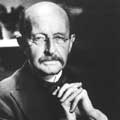 But
even if the radiation formula should prove to be absolutely accurate it
would after all be only an interpolation formula found by happy guesswork,
and would thus leave one rather unsatisfied. I was, therefore, from the
day of its origination, occupied with the task of giving it a real physical
meaning.
But
even if the radiation formula should prove to be absolutely accurate it
would after all be only an interpolation formula found by happy guesswork,
and would thus leave one rather unsatisfied. I was, therefore, from the
day of its origination, occupied with the task of giving it a real physical
meaning. (Max Planck, 1919 Nobel Prize address, 'The Origin and Development of the Quantum Theory')
Max Planck (1858 - 1947)
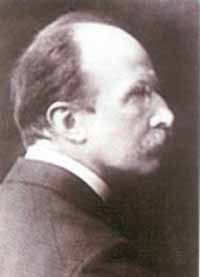 Consequently,
there remains only the one conclusion, that previous electron theories suffer
from an essential incompleteness which demands a modification, but how deeply
this modification should go into the structure of the theory is a question
upon which views are still widely divergent. J. J. Thompson inclines to
the most radical view, as do J. Larmor, A. Einstein, and with him I. Stark
who even believe that the propagation of electromagnetic waves in a pure
vacuum does not occur precisely in accordance with the Maxwellian field
equations, but in definite energy quanta hv. I am of the opinion, on the
other hand, that at present it is not necessary to proceed in so revolutionary
a manner, and that one may come successfully through by seeking the significance
of the energy quanta hv solely in the mutual actions with which
the resonators influence one another. A definite decision with
regard to these important questions can only be brought about as a result
of more experience. (Max Planck, Columbia Lectures on Quantum
Theory)
Consequently,
there remains only the one conclusion, that previous electron theories suffer
from an essential incompleteness which demands a modification, but how deeply
this modification should go into the structure of the theory is a question
upon which views are still widely divergent. J. J. Thompson inclines to
the most radical view, as do J. Larmor, A. Einstein, and with him I. Stark
who even believe that the propagation of electromagnetic waves in a pure
vacuum does not occur precisely in accordance with the Maxwellian field
equations, but in definite energy quanta hv. I am of the opinion, on the
other hand, that at present it is not necessary to proceed in so revolutionary
a manner, and that one may come successfully through by seeking the significance
of the energy quanta hv solely in the mutual actions with which
the resonators influence one another. A definite decision with
regard to these important questions can only be brought about as a result
of more experience. (Max Planck, Columbia Lectures on Quantum
Theory)Prior to then light had been considered as a continuous electromagnetic wave, thus the discrete nature of light was completely unexpected, as Albert Einstein explains;
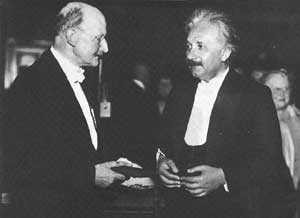 About
fifteen years ago [1899] nobody had yet doubted that a correct account of
the electrical, optical, and thermal properties of matter was possible on
the basis of Galileo-Newtonian mechanics applied to molecular motion and
of Maxwell's theory of the electromagnetic field. (Albert Einstein,
1915)
About
fifteen years ago [1899] nobody had yet doubted that a correct account of
the electrical, optical, and thermal properties of matter was possible on
the basis of Galileo-Newtonian mechanics applied to molecular motion and
of Maxwell's theory of the electromagnetic field. (Albert Einstein,
1915)
Then Planck showed that in order to establish a law of heat
radiation (Infra red light waves) consonant with experience, it was necessary
to employ a method of calculation whose incompatibility with the principles
of classical physics became clearer and clearer. For with this method of
calculation, Planck introduced into physics the quantum hypothesis, which
has since received brilliant confirmation. (Albert Einstein,
on Quantum Theory, 1914)
In the year nineteen hundred, in the course of purely theoretical
(mathematical) investigation, Max Planck made a very remarkable discovery:
the law of radiation of bodies as a function of temperature could not be
derived solely from the Laws of Maxwellian electrodynamics. To arrive at
results consistent with the relevant experiments, radiation of a given frequency
f had to be treated as though it consisted of energy atoms (photons) of
the individual energy hf, where h is Planck's universal constant. During
the years following, it was shown that light was everywhere produced and
absorbed in such energy quanta. In particular, Niels Bohr was able to largely
understand the structure of the atom, on the assumption that the atoms can
only have discrete energy values, and that the discontinuous transitions
between them are connected with the emission or absorption of energy quantum.
This threw some light on the fact that in their gaseous state elements and
their compounds radiate and absorb only light of certain sharply defined
frequencies. (Albert Einstein, on Quantum Theory, 1940)
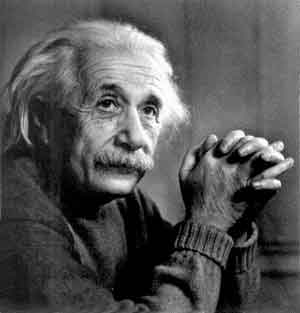 Even
the Greeks had already conceived the atomistic nature of matter and the
concept was raised to a high degree of probability by the scientists of
the nineteenth century. But it was Planck's law of radiation that yielded
the first exact determination - independent of other assumptions - of the
absolute magnitudes of atoms. More than that, he showed convincingly that
in addition to the atomistic structure of matter there is a kind of atomistic
structure to energy, governed by the universal constant h, which was introduced
by Planck. This discovery became the basis of all twentieth-century research
in physics and has almost entirely conditioned its development ever since.
Without this discovery it would not have been possible to establish a workable
theory of molecules and atoms and the energy processes that govern their
transformations. Moreover, it has shattered the whole framework of classical
mechanics and electrodynamics and set science a fresh task: that
of finding a new conceptual basis for all physics. Despite remarkable
partial gains, the problem is still far from a satisfactory solution.
Even
the Greeks had already conceived the atomistic nature of matter and the
concept was raised to a high degree of probability by the scientists of
the nineteenth century. But it was Planck's law of radiation that yielded
the first exact determination - independent of other assumptions - of the
absolute magnitudes of atoms. More than that, he showed convincingly that
in addition to the atomistic structure of matter there is a kind of atomistic
structure to energy, governed by the universal constant h, which was introduced
by Planck. This discovery became the basis of all twentieth-century research
in physics and has almost entirely conditioned its development ever since.
Without this discovery it would not have been possible to establish a workable
theory of molecules and atoms and the energy processes that govern their
transformations. Moreover, it has shattered the whole framework of classical
mechanics and electrodynamics and set science a fresh task: that
of finding a new conceptual basis for all physics. Despite remarkable
partial gains, the problem is still far from a satisfactory solution.(Albert Einstein, on Quantum Theory, 1950)
We can now finally solve these problems by understanding the reason for these discrete energy states, which are due to the fact that standing waves only exist at discrete frequencies, like notes on the string of a guitar, thus while the correct Spherical Standing Wave Structure of Matter predicts that energy exchanges will be discrete, as observed, the continuous e-m wave does not anticipate this.
Thus the Spherical Standing Wave Structure of Matter explains Max Planck's (1900) discovery that there are only certain allowed discrete energy states for electrons in molecules and atoms, and further, that light is only ever emitted and absorbed by electrons in discrete or 'quantum' amounts, as the electrons move from one stable standing wave pattern to another.

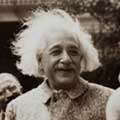
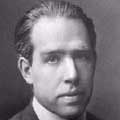
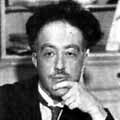
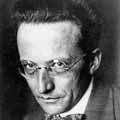
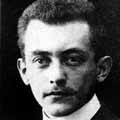
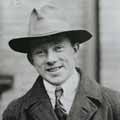
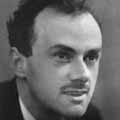
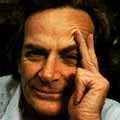
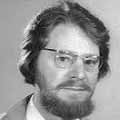
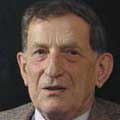
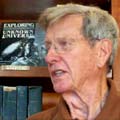
No comments:
Post a Comment